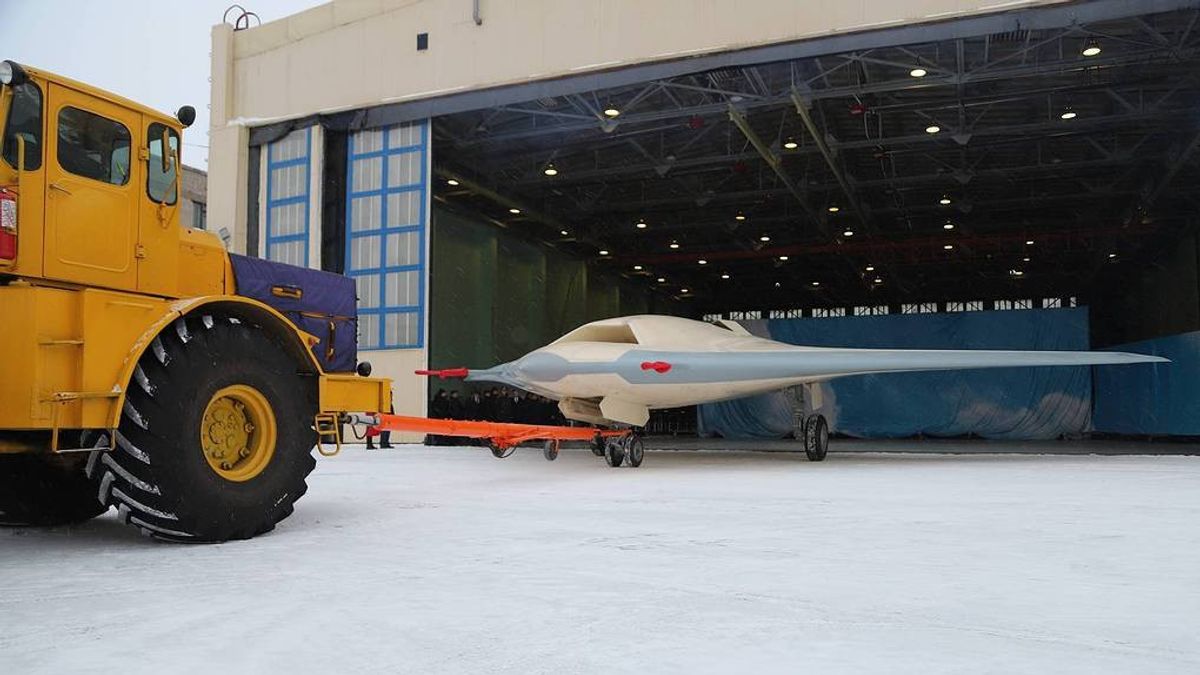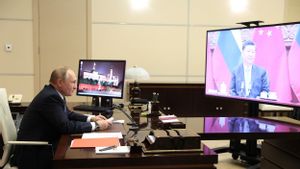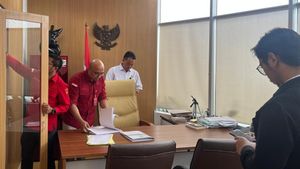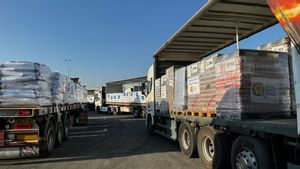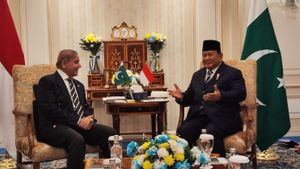JAKARTA - The first flight prototype of Russia's state-of-the-art S-70 'Okhotnik' ('Hunter') heavy attack drone was unveiled at the Novosibirsk Aviation Enterprise, while preparations for the drone's debut flight are being prepared, Russian Deputy Defense Minister Alexey Krivoruchko said on Tuesday.
"The launch of the drone marks the end of the assembly of the item as a whole and its equipment, with all the necessary onboard equipment in accordance with the requirements for the aircraft. And the transition to a comprehensive ground test to prepare for its debut flight," he explained citing TASS December 14.
Deputy Minister of Defense of Russia, who is on a work trip to Novosibirsk, inspects the fulfillment of the defense procurement plan at the Novosibirsk Aviation Enterprise. He oversaw the launch of the first Okhotnik drone flight prototype and inspected the assembly process for the second prototype drone.
"The United Aircraft Corporation of the state company Rostec launched the S-70 'Okhotnik' drone equipped with a flat jet nozzle," said Rostec, commenting on the drone launch.
"The new Okhotnik features a flat thrust nozzle as its main feature, which reduces its radar signature," Rostec CEO Sergey Chemezov was quoted as saying.
As United Aircraft Corporation (UAC) CEO Yury Slyusar points out, work under the Okhotnik program is a key area for Sukhoi Company and UAC.
"Today we are making all efforts to complete trials as soon as possible and launch serial production," the chief executive said.

The S-70 'Okhotnik' drone developed by the Sukhoi Design Bureau features stealth technology and a flying wing (no tail) design, which reduces its radar signature.
According to open-source data, the drone has a take-off weight of 20 tons and can develop a speed of around 1.000 km/h. Serial deliveries of drones to troops will start from 2024.
Previously, the Okhotnik heavy attack drone made its debut flight on August 3, 2019. The flight lasted more than 20 minutes under operator control. On 27 September 2019, Okhotnik made a joint flight with the Su-57 fifth-generation fighter jet. The drone maneuvered through the air in automatic mode at an altitude of about 1.600 meters and the flight lasted 30 minutes.
The Motor Design Bureau of the Ufa Motor Building Production Association (part of the United Engine Corporation), which is involved in engine development for the new drone, previously reported that the second version of the Okhotnik will be equipped with a thruster with a new flat nozzle.
As the company's engineers explain, the flat nozzle generated by the 3D printer will reduce drone signal reflection for enemy heat-seeking missiles.
As UAC previously told TASS, the new drone will be able to operate in tandem with the Su-57 fifth-generation fighter. Okhotnik's drones will be able to strike both air and ground targets as part of a network-centric interaction with the fighter, he said.
A source in the domestic aircraft manufacturing industry previously told TASS, a pilot of the fifth-generation Sukhoi Su-57 fighter jet will simultaneously coordinate the operations of four of the newest Okhotnik heavy attack drones. Additionally, a cluster of drones will most likely be controlled from the new Su-57's special two-seat version.
SEE ALSO:
According to data from the Russian Ministry of Defense, during its first joint flight with the Su-57 fighter, the Okhotnik drone operated in automatic mode with its full configuration, entering the air combat warning area. During the joint flight, the Su-57 and Okhotnik tested the expansion of the fighter's radar field, issuing target acquisition data for using air-launched weapons.
Earlier, Russian Defense Minister Sergey Shoigu said in August, work on the Okhotnik heavy attack drone is expected to be completed by 2022. An opportunity will arise at that time to sign a long-term contract for the delivery of this most advanced drone to Russian troops.
The English, Chinese, Japanese, Arabic, and French versions are automatically generated by the AI. So there may still be inaccuracies in translating, please always see Indonesian as our main language. (system supported by DigitalSiber.id)
